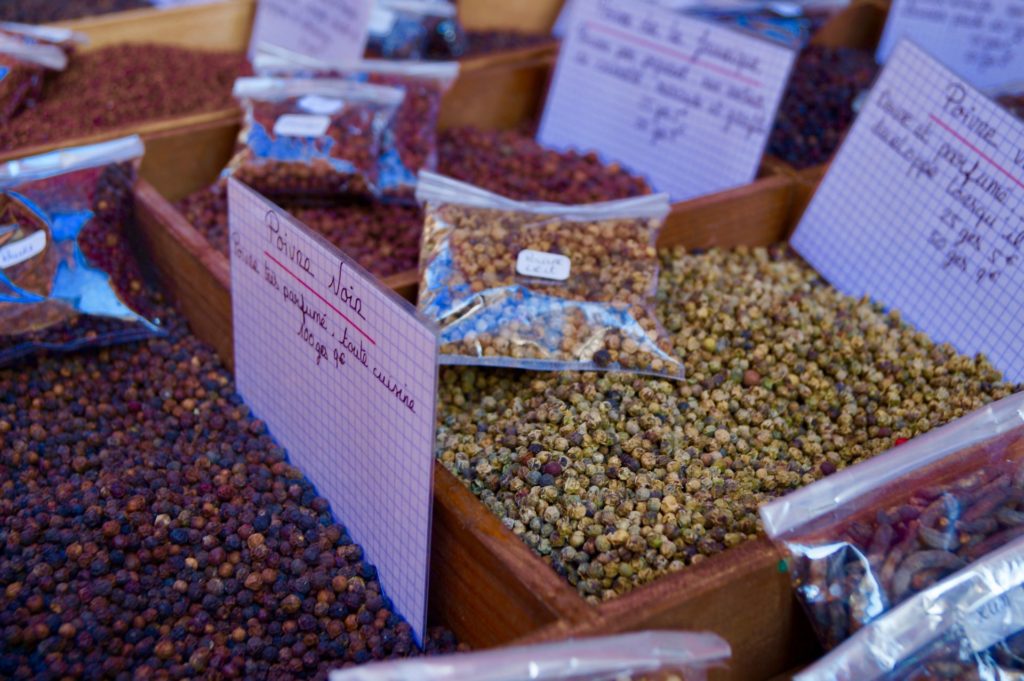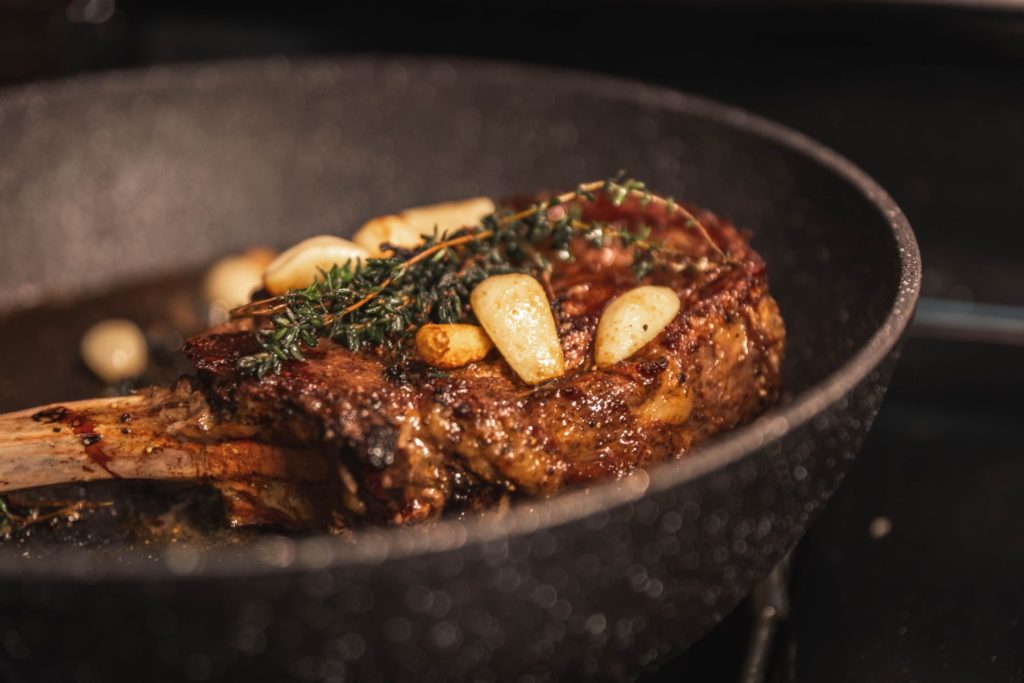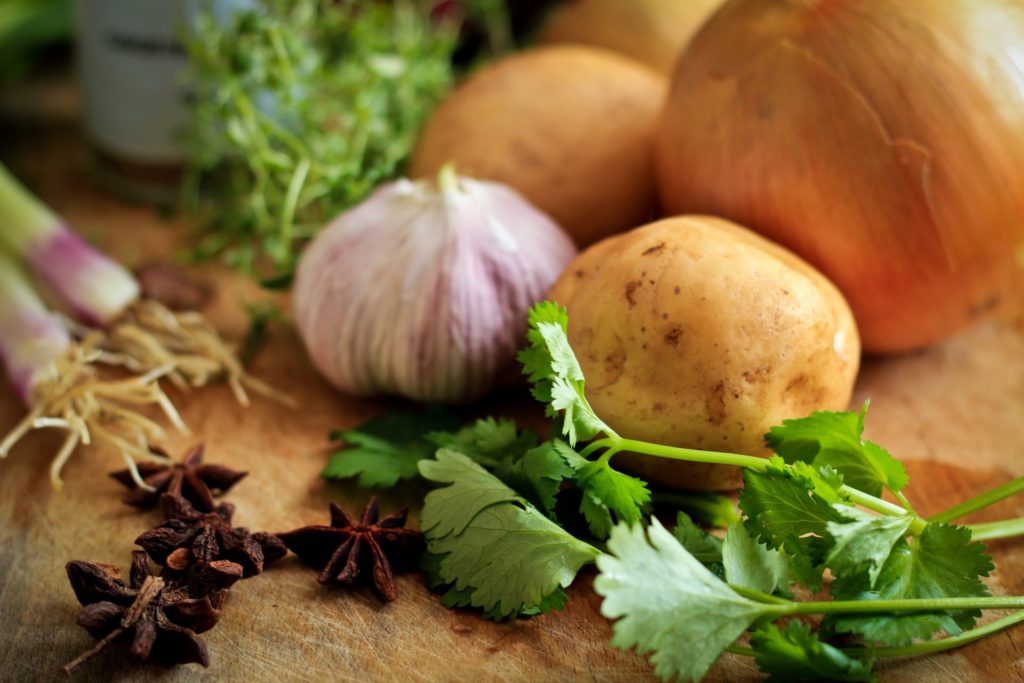Are you ready to emerge from hibernation? Friday evenings, when we eat dinner at the yacht club, people are talking less about heading off to Palm Springs or Tucson and more about planting peas. Down on the dock, some hardy souls are talking about getting a crew together, putting up sails, and racing around Shaw Island. In the yard, daffodils and hyacinths are budding; blue irises and purple crocuses are starting to bloom. Bright green garlic shoots are popping up. Any day now, the flock of blackbirds that occupy the trees across the road will start singing their nesting song.
The world is starting to turn faster. Soon the days will be flying by. Soon the captain will be getting Pelican ready for adventures on the water—painting, varnishing, making her shine—and I will be cleaning and provisioning for the cruising season.
For years, I have used the same garlic and herbes de Provence mixture to season chicken, pork, lamb and beef. It’s really good, and I’ve made it so many times I can put it together in my sleep. But it’s time to branch out. This year, I plan to try different combinations of fresh, locally available herbs to deliver a nice hit of flavour. And given that almost everything tastes better with the bright bite and perky aroma of good pepper, I’m going to stock the galley with at least three types of peppercorns (see PY January 2019 for duck breasts with green peppercorn sauce).
I’m wondering what life was like without this spice, way back when. It’s not surprising that when the Roman Empire was at its height, a large flotilla sailed to India each year to buy pepper. It is equally unsurprising that later, European traders vied for dominance in the spice trade.
True peppercorns come from a vine that is native to the Malabar Coast of southern India, and are classed as drupes. Drupes are fruits with pits, like peaches and apricots. When the pepper drupes are dried normally, with skin and fruit intact, the result is the familiar, black, wrinkled surface. If the same drupes are dried in a special way that maintains the green color, then they become green peppercorns. If the fruit and skin are removed before drying, then the result is a smooth, white peppercorn. Each process results in a distinctive appearance and flavour.
Pink peppercorns are not true peppercorns. They come from South America, either from the Peruvian pepper tree, native to the Andes, or the Brazilian pepper tree. If you have a family member who is severely allergic to tree nuts, as I do, it’s important to know that these trees are related to the cashew family. There have been cases of allergic reaction, even anaphylaxis, to pink peppercorns.
Sichuan peppercorns are not peppercorns at all. Native to parts of China, they are dried rinds of the fruit of a citrus tree, and have a sprightly, lemony flavour, which stands out nicely in vegetable dishes, or with seafood or tofu.

Freshly ground pepper will always have more zest than pre-ground pepper because some of the compounds that create the flavour start to evaporate as soon as the peppercorn is crushed. So, I never go anywhere without a grinder full of black Tellicherry peppercorns, which have a citrus aroma and pack medium heat, and I crush the other varieties with a mortar and pestle just in time to use them.
Regarding the recipes below, one calls for white peppercorns and one for green, in case you, too, want to branch out, but you can substitute black pepper. I’m thinking about using more robust herbs, such as oregano or rosemary and black pepper, with lamb and beef. And perhaps less assertive mixtures, such as thyme, parsley, and green or white pepper, will go well with chicken and pork. But there is only one rule: Have fun with your food.
Notes:
- Substituting dried herbs for fresh: One tablespoon fresh = one teaspoon dried.
- Unsalted butter is preferred, but not required.
- Black pepper can be substituted for white or green.
Goes-with-Everything Herbed Butter
Refrigerated, keeps for several days. (Try not to eat it by the spoonful.)
Ingredients:
- 4 tablespoons softened butter
- 2 tablespoons capers, rinsed
- 3 tablespoons sundried tomatoes (rehydrated if necessary)
- 1–2 tablespoons fresh parsley, basil, or dill
- 1 teaspoon lemon zest
- 1 teaspoon crushed green peppercorns OR 1/2 teaspoon black pepper
Method:
- Finely chop capers, tomatoes and herbs.
- Mix everything together.
- If not using it immediately, shape it into a log, wrap and refrigerate.
For 4–6 chicken breasts or whole chicken: Spread a generous amount under the skin. Brush skin with olive oil. Season with salt and pepper. Roast or grill skin side up in a pan or foil “boat” to catch the juices.
For fish: Place a dollop on top at the end of cooking.
For sauce: Add to pan juices with a splash of white wine. Simmer to thicken.
For hors d’oeuvre: Spread on baguette or parchment-thin crackers.

Hearty Herbs
For 6–8 lamb chops, 4–6 beef steaks or one flank steak.
Ingredients:
- 3–4 large cloves garlic
- 1/2 tablespoon fresh rosemary
- 1 tablespoon fresh thyme leaves
- 1 tablespoon parsley
- 1 teaspoon lemon zest
- 1/2 teaspoon salt (kosher preferred)
- 1/2 teaspoon black pepper
Method:
- Coarsely chop the herbs and garlic, then put all ingredients together and chop until thoroughly mixed.
- If using flank steak or other tough cuts, lightly score both sides with a sharp knife.
- Brush the meat with oil, then press the herbs into all surfaces.
- Refrigerate for several hours.

Mashed Potatoes with Herbs and White Pepper
Ingredients:
- 1/3–1/2 cup cream, crème fraiche or whole milk
- 1 teaspoon finely crushed white peppercorns OR 1/2 teaspoon black pepper
- 3–4 large cloves garlic, sliced thinly and sautéed gently in two tablespoons butter until a light golden colour
- 1/3 cup chopped parsley, or parsley and chives
- Salt (to taste)
Method:
Mash together with 4–6 servings of potatoes.
